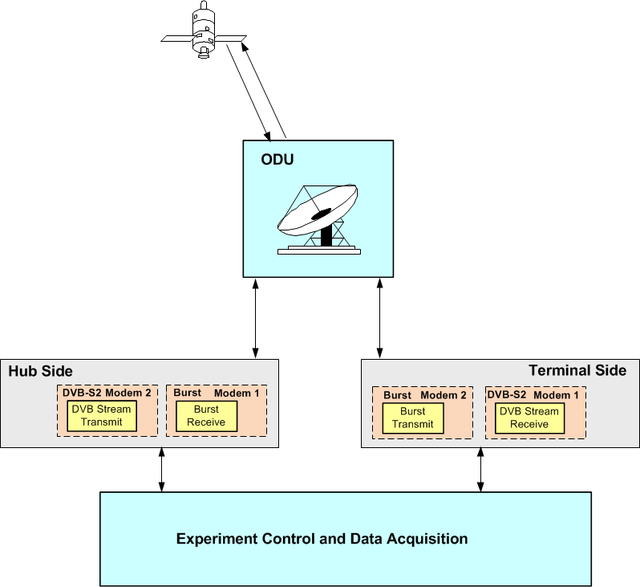Q/V-Band Optimized Transmission System
Partners
- European Space Agency (ESA): Funding and control
- Joanneum Research (JR): Prime contractor
- Graz University of Technology (TU Graz): Subcontractor
Abstract
Located beyond Ku- and-Ka band, the Q/V-band contains the next available frequencies for satellite communications. In the near future, it is expected that these bands will be (urgently) needed, mainly driven due to the lack of spectral resources. Moreover, the Q/V-band offers the advantage of considerably smaller antennas, which makes it particularly attractive for satellite-aircraft communications.
Compared to Ka- and Ku-band, the significantly higher fluctuations of the atmospheric attenuation, e.g. due to rain, clouds and gases, have to be mentioned first. Depending on the climate zone, rain fades of 20 dB and more are expected. Hence, fade mitigation techniques (FMT), with adaptive coding and modulation (ACM) as most prominent example in this respect, will be exploited in Q/V-band applications.
In the proposed project, research and experimentation over Q/V-band will be extended in two basic directions: TDMA-based systems as used in DVB-RCS or DVB-RCS2:
- In TDMA, the transmission of data between sender and receiver (master-slave, slave-slave) is burst-oriented; this is a significant difference to continuous transmission systems like DVB-S2.
- Very low SNR: In Q/V-bands, modems have to be operated at very low SNRs, i.e. down to -10 dB, so as to maintain reliable transmission during deep fades as expected in this frequency band.
To achieve such a low operational point, a novel receiver concept will be proposed and the advantages versus the actual DVB-RCS2 solution will be assessed in quantitative and qualitative terms. Although the proposed solution addresses the DVB-RCS2 transmission scheme, selected aspects of the algorithmic concept could be applicable to future DVB-Sx standards as well.
